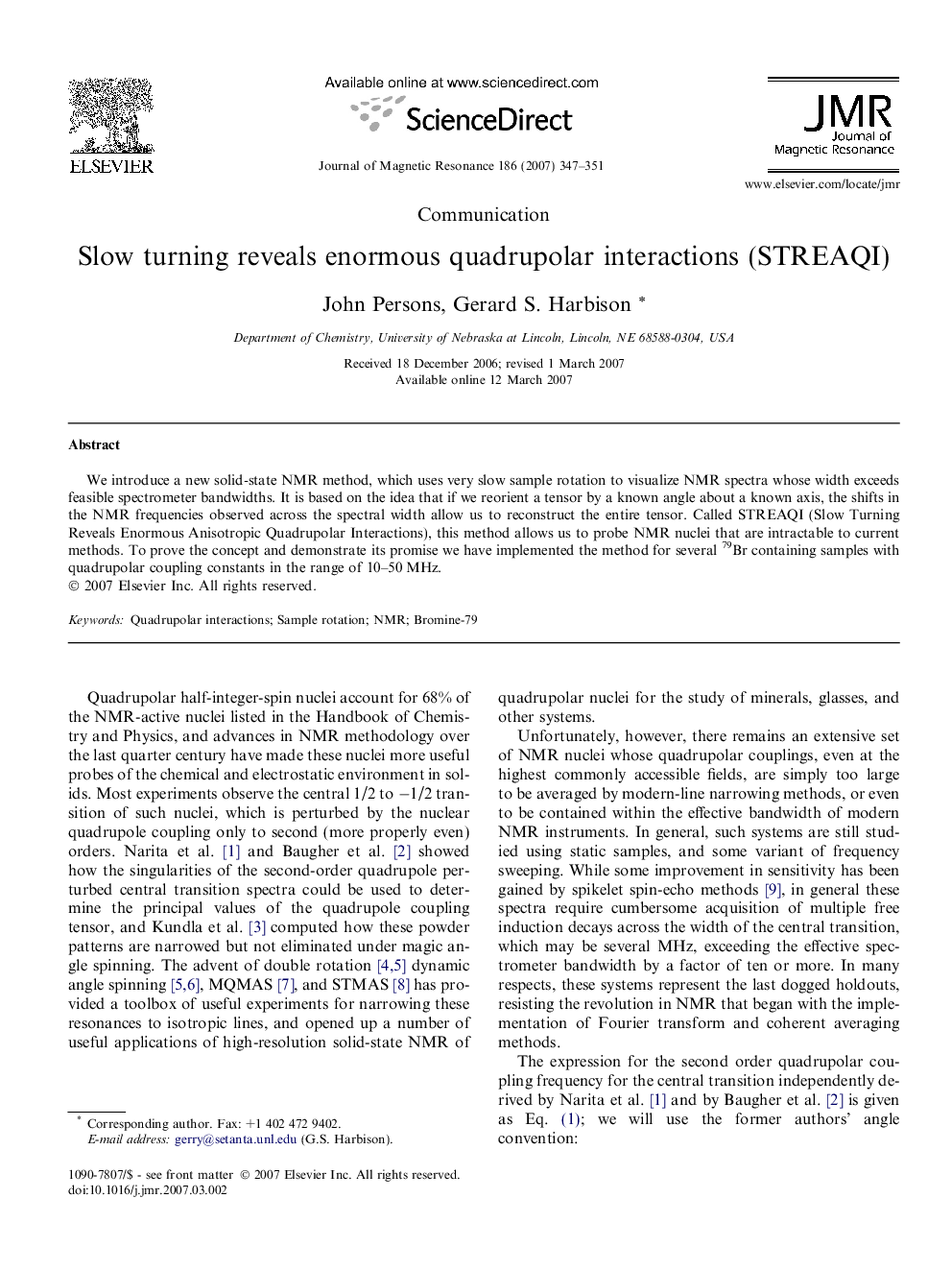| Article ID | Journal | Published Year | Pages | File Type |
|---|---|---|---|---|
| 5407660 | Journal of Magnetic Resonance | 2007 | 5 Pages |
Abstract
We introduce a new solid-state NMR method, which uses very slow sample rotation to visualize NMR spectra whose width exceeds feasible spectrometer bandwidths. It is based on the idea that if we reorient a tensor by a known angle about a known axis, the shifts in the NMR frequencies observed across the spectral width allow us to reconstruct the entire tensor. Called STREAQI (Slow Turning Reveals Enormous Anisotropic Quadrupolar Interactions), this method allows us to probe NMR nuclei that are intractable to current methods. To prove the concept and demonstrate its promise we have implemented the method for several 79Br containing samples with quadrupolar coupling constants in the range of 10-50Â MHz.
Related Topics
Physical Sciences and Engineering
Chemistry
Physical and Theoretical Chemistry
Authors
John Persons, Gerard S. Harbison,
